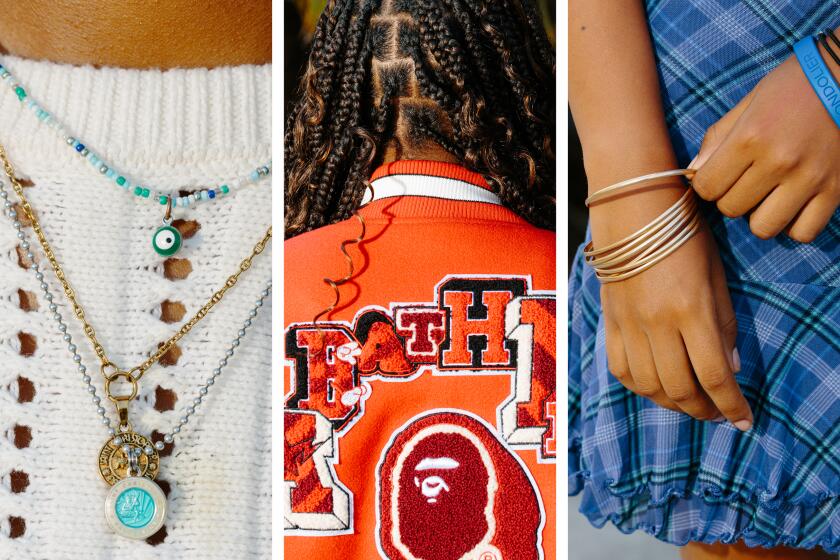COLLECTIONS : Tokyo Shows a Lighter Side
As the fashion capital of Asia, this city has produced more than a few world-class designers.
The big names of the early ‘80s, Issey Miyake, Rei Kawakubo and Yohji Yamamoto, who stormed Paris and Tokyo simultaneously in their day, held sway again last week during presentations of the fall ’91 Tokyo collections. But for the first time, they face some serious competition.
Norihisa Ota for C’est Vrai as well as Kyoko Higa, who designed the Rose Is a Rose collection until establishing her own label this year, are two of the bright new lights in Tokyo fashion.
Each sends the same message: Clothes should be fun to wear. Instead of the oversize, stark, cinder-colored statements made by Miyake and his contemporaries in the ‘80s, these newer talents show lighthearted, body-revealing, colorful clothes.
Higa’s skintight shorts or pencil-thin trousers, skimpy knit tops and fanciful “piggy print” outfits are in the same playful direction she took for Rose Is a Rose.
Ota’s print leggings and long jackets, inspired by Emilio Pucci prints, showed that she is attuned to the trends in Paris and Milan. Her black and white bra-top dress, dripping with strands of pearls, could have come from Madonna’s closet--several years ago.
Among established designer names, Junko Koshino, who shows her collections in Paris before Tokyo, and Yoshiki Hishinuma presented styles that look to the future. But it is not a future where most women are likely to feel comfortable.
It is difficult to imagine any woman dressed in Koshino’s cake-box-shaped dresses with halter tops.
Hishinuma’s hard, plastic “diaper shorts” in vivid buttercup, green or blue were worn with black tights and football jackets with padded shoulders.
Returning to Earth and to 1991, there were more than a few designers who proved that their purpose is to make fashion wearable.
Masatomo Yamaji’s new menswear line, Masatomo, does just that. Mature and tasteful, this line uses expensive silks, wools and leather for a high-quality--and high-priced--profile.
His women’s line, Ma-Ji Donna, is a female version of the menswear.
Yoshiyuki Konishi is known for unique and colorful collage-print sweaters. This time, he showed a white crocheted jacket that was a nice variation on a fisherman’s-knit cardigan.
Unlike the days when Kawakubo and company set the trend here, fall ’91 fashion colors included every shade from fuchsia and vivid buttercup to moss green and azure blue.



